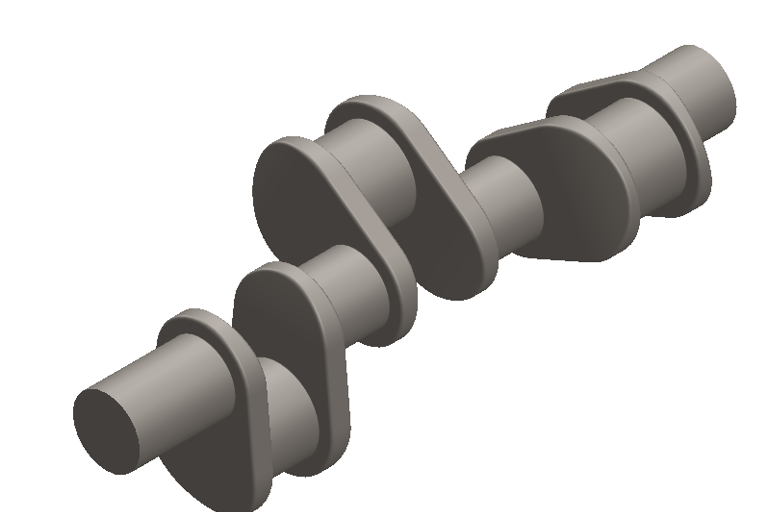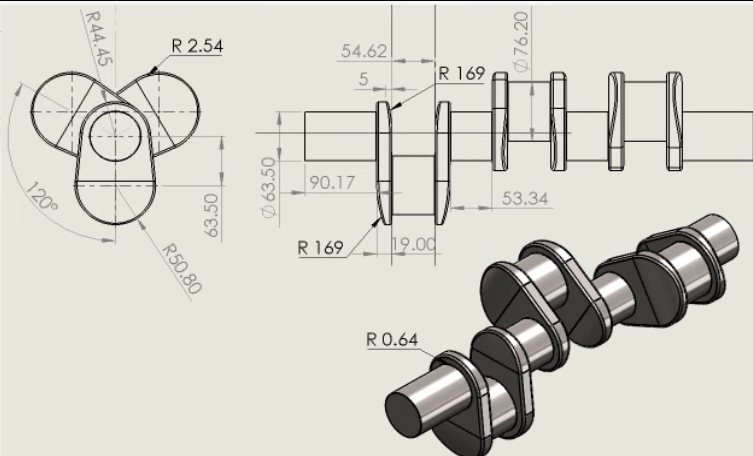Crank Shaft
The crankshaft, the spine of the V6 engine’s rotational system, is modeled with precision to reflect the functional geometry necessary for balanced engine operation. It is typically manufactured from normalized AISI 4340 alloy steel, chosen for its superior strength, fatigue resistance, and toughness under cyclic loading.
This design features three crank throws spaced 120° apart, supporting a six-cylinder (V6) firing sequence with optimal balance and minimal vibration. The crankpins are offset from the main shaft by a radius of 50.80 mm, converting reciprocating piston forces into continuous rotational torque. Each throw includes precisely radiused fillets (e.g., R2.54 mm) to reduce stress concentrations and enhance durability.
The shaft diameter at the journals is Ø63.50 mm, supporting robust bearing interfaces, while the main web thicknesses and counterweights are dimensioned for rotational symmetry and dynamic balance. Total crank throw separation (e.g., 54.62 mm, 53.34 mm) accommodates uniform piston phasing across banks.
This crankshaft design not only drives the pistons but also provides rotational power to the flywheel, timing system, and accessories. Its mechanical integrity is crucial to the engine’s performance, longevity, and efficiency.
Model



